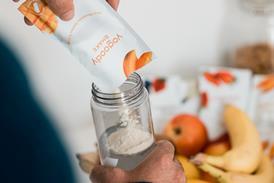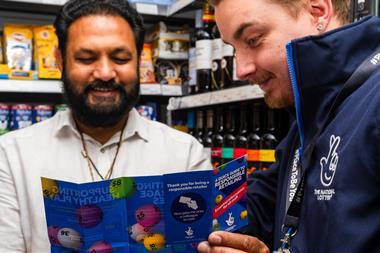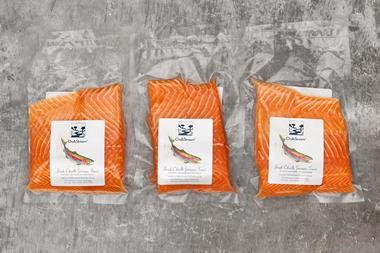Grand Cayman is off the beaten track, so running a great supermarket there poses unique sourcing problems. US journalist Lisa Sandberg paid a visit
Grand Cayman, a tiny island just 150 miles south of Cuba in the British West Indies, is the last place one would expect to find a supermarket story.
And as with any trip to "paradise", there are better things to think about than the grocery business.
But it doesn't take long to realise that in order to stretch your money on this very expensive, rather sophisticated island which boasts the fifth largest financial centre in the world a trip to the grocery store is a necessity, not a choice.
"It has everything you need," the front desk clerk yelled out as my husband and I climbed into our tiny rental car and headed toward Foster's Food Fair, the closest store to us, only three miles away from our condo.
As we drove, I recalled other Caribbean supermarkets' I'd visited in the past: small, stiflingly hot stores, with health and beauty aids circa 1950, spoiled milk, limp lettuce, and high prices.
But as I rounded the corner to the shopping center, I realised this was no ordinary island supermarket. The 32,500 square foot, three year old store had the look and feel of any modern American supermarket.
And just as my husband yelled out to me "They have the New York Times and the Wall Street Journal!", I was discovering that not only did they have my favourite brand of yogurt, but also at prices only slightly higher than I pay at home.
That was the first of several visits to Foster's Strand' location, including one Sunday afternoon trip to the store's pharmacy, which proved to be a lifesaver since Caymanian law prohibits any supermarket to open on Sundays. The small, independent chain also has a 90,000 square foot supermarket/warehouse operation near the airport that offers photo processing, video rentals and an in house bank, as well as a smaller store on the island's north shore.
This is a lot of supermarket space for a little 76 square mile island, and Foster's is not the only chain in town. There are also two rivals, which together compete for the loyalty of only about 50,000 island inhabitants.
"We have to import almost everything," Foster's managing director Woody Foster told me. "Before my family started a supermarket here (20 years ago), all Caymanians could buy were frozen meat and frozen milk," he said. The coral reefs and crystal clear waters, which attract snorkellers and scuba divers from around the world, are in part due to very rocky terrain on the island. And where there is no rock, there is marshland making farming all but impossible.
Last year, Foster's Food Fair joined IGA, a network of nearly 4,000 small independent grocers. "The main reason we joined IGA was for its private label," said Foster, noting that his family's stores had had bad luck with other private labels, changing them three times in three years.
Foster's already used IGA's main Caribbean distributor, Supervalu's Florida location when it joined the alliance, which helped streamline shipments of both the IGA label and national brand products.
"Florida is a chain dominated state, and since IGA stores are independent, Supervalu in Florida started looking towards the Caribbean about five years ago," said Bill Hayes, editor of IGA's Grocergram.
"The key was critical mass for efficiency and delivery you have to be able to fill at least one container," he added. IGA now has about 30 member stores on 10 islands in the Caribbean.
A broad, but simple distribution process helps to keep enough food on hand, not just for islanders but Grand Cayman's 1.2 million annual tourists.
Foster's stocks its warehouse with about three weeks' worth of grocery items, and receives boat shipments from Miami bi-weekly. All of the store's seafood as well as more perishable produce like mushrooms and berries are flown in by plane once a week. There is a two week lead time for food orders to the Caribbean, according to Supervalu, though it takes only three days to sail to the Cayman Islands from Miami, versus a seven day trip to Trinidad.
"A couple of years ago, when Hurricane Mitch made it impossible for the boats to dock here, we chartered a plane and flew the food in," said Foster matter-of-factly.
"Foster's (store size and volume) is the exception to the rule in the Caribbean market, and they probably have the biggest supermarkets in the Caribbean," said Ken Whitley, retail business associate at Supervalu, noting that few other island stores use airplanes to import their food.
The typical store in that region is a much smaller 12,000 to 15,000 square feet. "It is probably because there is a lot of British and American influence in the Cayman Islands, and most of the tourists are American," Whitley added.
As for this American tourist, I felt I had learned too much about the "civilized" distribution chain, and I was determined to eat only local fare during the last part of my visit.
That was, until I found out what my choices were: goat stew, conch fritters or turtle burgers.
{{MANAGEMENT FEATURE }}
Close menu
- Home
- Retail & Wholesale
-
Products & Suppliers
- Back to parent navigation item
- Products & Suppliers
-
Product Categories:
- Back to parent navigation item
- Product Categories:
- Alcoholic drinks
- Bakery
- Cereals & breakfast
- Cheese
- Chicken & poultry
- Chocolate
- Confectionery
- Crisps, nuts & snacks
- Dairy
- Fish
- Fresh produce
- Frozen
- Household
- Meat
- Own Label
- Sauces & condiments
- Seasonal
- Soft drinks
- Vaping
- Vegan & plant-based
- World foods
- Suppliers
- People
- Reports & Data
-
Topics A-Z
- Back to parent navigation item
- Topics A-Z
-
Popular topics:
- Back to parent navigation item
- Popular topics:
- Cost of living crisis
- Crime
- Deposit Return Schemes
- Finance
- Government & Regulation
- Health
- Inflation
- Loyalty
- Marketing
- Mergers & Acquisitions
- New Product Development
- Sourcing
- Supply chain
- Sustainability & environment
- Technology
- Ultra Processed Foods
- Vaping
- A-Z all topics
- Content by type:
- Events
- Ask iA (beta)
- Subscribe now
Sign in to comment on this article
Not logged in before? Register for FREE guest access today.
You will be able to:
- Read more stories
- Receive daily newsletters
- Comment on stories
Advert















No comments yet